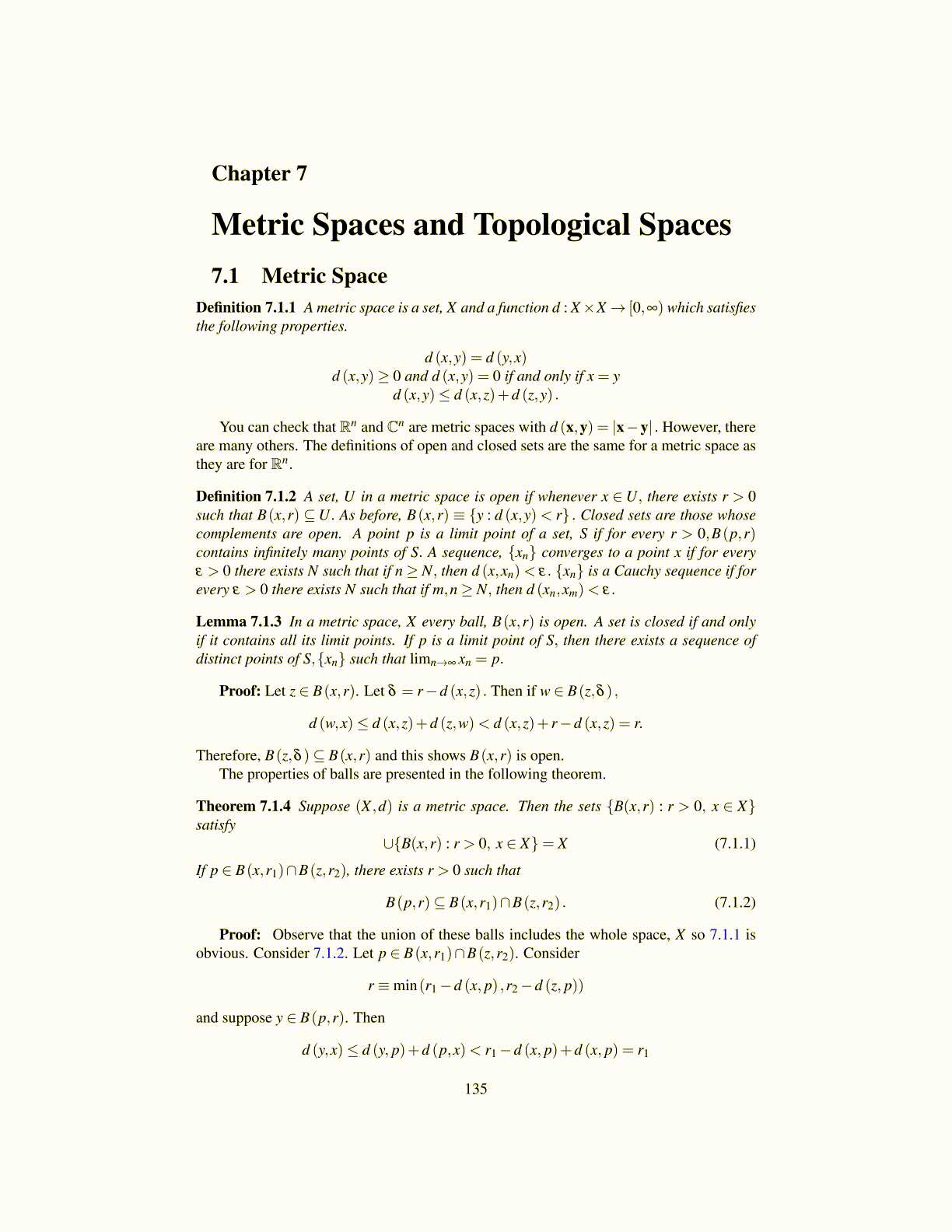
Chapter 7
Metric Spaces and Topological Spaces7.1 Metric Space
Definition 7.1.1 A metric space is a set, X and a function d : X×X→ [0,∞) which satisfiesthe following properties.
d (x,y) = d (y,x)d (x,y)≥ 0 and d (x,y) = 0 if and only if x = y
d (x,y)≤ d (x,z)+d (z,y) .
You can check that Rn and Cn are metric spaces with d (x,y) = |x−y| . However, thereare many others. The definitions of open and closed sets are the same for a metric space asthey are for Rn.
Definition 7.1.2 A set, U in a metric space is open if whenever x ∈U, there exists r > 0such that B(x,r) ⊆U. As before, B(x,r) ≡ {y : d (x,y)< r} . Closed sets are those whosecomplements are open. A point p is a limit point of a set, S if for every r > 0,B(p,r)contains infinitely many points of S. A sequence, {xn} converges to a point x if for everyε > 0 there exists N such that if n≥ N, then d (x,xn)< ε. {xn} is a Cauchy sequence if forevery ε > 0 there exists N such that if m,n≥ N, then d (xn,xm)< ε.
Lemma 7.1.3 In a metric space, X every ball, B(x,r) is open. A set is closed if and onlyif it contains all its limit points. If p is a limit point of S, then there exists a sequence ofdistinct points of S,{xn} such that limn→∞ xn = p.
Proof: Let z ∈ B(x,r). Let δ = r−d (x,z) . Then if w ∈ B(z,δ ) ,
d (w,x)≤ d (x,z)+d (z,w)< d (x,z)+ r−d (x,z) = r.
Therefore, B(z,δ )⊆ B(x,r) and this shows B(x,r) is open.The properties of balls are presented in the following theorem.
Theorem 7.1.4 Suppose (X ,d) is a metric space. Then the sets {B(x,r) : r > 0, x ∈ X}satisfy
∪{B(x,r) : r > 0, x ∈ X}= X (7.1.1)
If p ∈ B(x,r1)∩B(z,r2), there exists r > 0 such that
B(p,r)⊆ B(x,r1)∩B(z,r2) . (7.1.2)
Proof: Observe that the union of these balls includes the whole space, X so 7.1.1 isobvious. Consider 7.1.2. Let p ∈ B(x,r1)∩B(z,r2). Consider
r ≡min(r1−d (x, p) ,r2−d (z, p))
and suppose y ∈ B(p,r). Then
d (y,x)≤ d (y, p)+d (p,x)< r1−d (x, p)+d (x, p) = r1
135